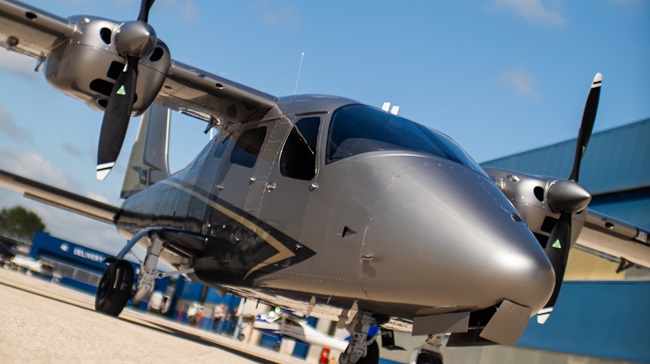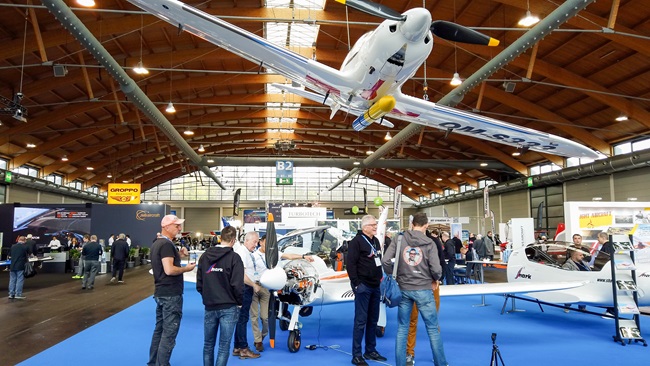Horten flying wing displayed at Aero
Like so often in aviation, the Horten HX–2 flying wing began with a dream. Bernhard Mattlener, CEO and co-founder of Horten Aircraft GmbH, encountered one of Reimar Horten’s creations and was smitten. He started to research the inventor and his experimental aircraft.
In 1989, he contacted Horten to ask for his cooperation. Much to his surprise, he agreed. In 1990, Mattlener eventually gave up his study of law to found a company to research and develop flying wings. Together he and Horten developed the PUL 9 and the PUL 10; however, Horten died in 1994 without seeing the latter fly.
Based on the PUL 10, Hans Heinen, conceptual designer and chief engineer, continued the work on a blended-wing-body design, where payload and fuel can be stored in the wing. The proof-of-concept airplane was completed and pilot Ken Schuetter, with 15 hours in type, flew the wing from Eisenach to Aero Friedrichshafen, albeit with the retractable landing gear extended, and without trim. Those issues will be resolved soon. He mentioned that he didn’t think crosswinds were an issue; as long as the aircraft is equipped with a free-castering nosewheel, it will line itself up with the runway after landing.
Saskikant Bakkavemana, who heads the company’s business development department and sales, said that interest from countries like the United Arab Emirates, Singapore, and India was remarkable and would be explored.
Future incarnations of the Horten should include an electrically powered model, as well as an unmanned and possibly a turbine version, with applications for the airlines in the far future. However, everyone involved emphasized the fact that right now it is important to perfect the current proof of concept.



